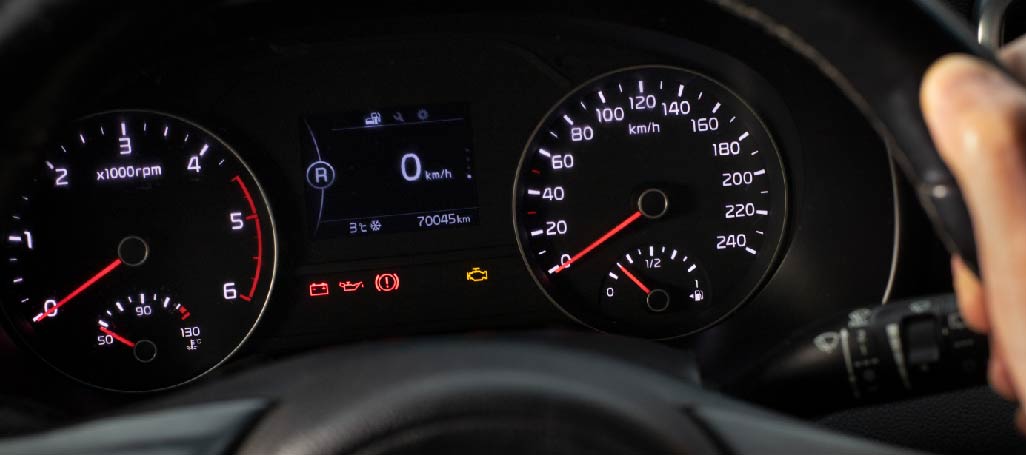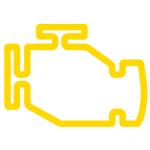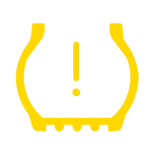Expert reveals dashboard lights you should never ignore
If a warning light appeared on your car dashboard, would you know what it means? Check out this blog to find out!

There's no hiding that seeing a signal light up on your vehicle's dashboard can trigger a few worries. While it may just be telling you that you've opened your boot, sometimes it may actually indicate a more serious issue that – if ignored – can damage your motor.
Surprisingly, only 7% of Brits can recognise and describe the meaning of each warning light on their car dashboard, whereas 46% of drivers admit to ignoring these flashing signals altogether.
However, since warning lights are designed to alert you when there's something wrong with your car, being aware of what every light signifies is crucial to stay safe on the road.
Jonathan Such, Head of Sales at vehicle finance company First Response Finance, lists 6 dashboard lights that motorists should never overlook, explaining what they mean and what may happen if you neglect their warning.
Low engine oil or low oil pressure

Image source: RAC
This peculiar red warning light resembling a magic lamp is known as the 'low engine oil' or 'low oil pressure' light. It tends to come on when the oil temperature is too high, or the oil level or pressure is too low.
In either situation, the most sensible thing to do is to stop the car as soon as it's safe.
Such said: "When the old-fashioned oil can symbol switches on, turn off the engine as soon as possible. In fact, if the oil isn’t lubricating the engine properly, it can cause severe damage to your motor and lead to a very expensive trip to the garage.
"Once you've turned off the engine, have a look for any oil leaks under the car and check your oil levels using the dipstick. In some cases, you can fix the issue by simply topping up the oil. But if the warning light stays on, you may have to call your breakdown provider, as driving any further can aggravate the problem."
Battery charge

Image source: RAC
A battery symbol with a plus and minus on each side will show if your car battery is not charging as it should. There may be several reasons for this, including a faulty battery, a faulty alternator, or a poor electrical connection.
Whatever the issue, it's wise to visit a mechanic as soon as possible. Your car is likely to keep running as usual when the warning light switches on – but once the battery is fully drained, nothing in your vehicle will work, and you'll be left stranded on the side of the road.
So, if you spot this warning light on your dashboard, make sure to get your vehicle checked. In most cases, you'll just need to replace your battery with a new one, which is a simple and inexpensive fix.
Brake system

Image source: RAC
If a red circle with an exclamation mark inside is showing on your dashboard, you might have a problem with your brake system.
"The 'parking brake' or 'brake fluid' warning light can be triggered by something as little as leaving your handbrake on," Such explained.
"However, if the signal persists after you've disengaged the handbrake, it might be alerting you about a more serious problem. For example, it could be telling you that the brake fluid level is low, or that there are some other mechanical issues that need looking at.
"In this scenario, you must see a professional as soon as you can. Brakes are one of the most important components of your vehicle, and any faults within this department can put you and fellow road users' wellbeing at risk."
Engine management

Image source: RAC
Has this engine-looking symbol appeared all of a sudden? It should definitely ring a few alarm bells.
Known as an 'engine control unit' or 'check engine' warning light, this signal lets you know that there might be a fault with your vehicle's engine.
If it's in amber, it's likely to be a minor issue, meaning you can continue your journey for the time being. However, make sure to get your car inspected as soon as you get the chance.
If it's flashing, though, you might need to address the problem in a swift fashion. Be sure to drive gently as you make your way to the garage to prevent further damage to your engine.
The warning light is likely to be accompanied by other tell-tale signs, such as a lack of power or stuttering when you put your foot down on the accelerator.
Engine cooling system

Image source: RAC
This warning light depicting a red thermometer in water will show when your engine is overheating, which could be caused by coolant levels running low.
As with the 'low oil pressure' signal, the best thing to do in this situation is to stop the car once it's safe to do so and turn off the engine. This way, you'll allow your engine to cool down a bit and prevent any damage to your motor.
In the meantime, check for leaks under and around your car, but there's a chance your coolant simply needs a quick top-up.
"Don't undo the coolant filler cap while the engine is still hot," Such added. "In fact, the system is likely to still be under pressure, and boiling coolant might spurt out of the filling tube and burn you."
Tyre pressure

Image source: RAC
This odd-looking symbol, which is meant to represent the cross-section of a tyre containing an exclamation mark, is called a 'Tyre Pressure Monitoring System' (TPMS).
If the TPMS starts illuminating, it means that the sensors in your tyres have detected a loss of pressure.
Under-inflated wheels can have a negative impact on your car's braking and traction, so it's important to take action at the first opportunity.
Topping up your tyre pressure is likely to do the job and get things back to normal. However, if the TPMS warning light stays on despite your quick check, there might be a puncture or other issue that needs inspection.
Recognising what each symbol on your car's dashboard means can keep you safe at the wheel and spare you from onerous bills at the garage. So, why not take some time to recap on your warning lights before your next commute?
Amid the cost-of-living crisis, many drivers are putting off essential service work. Check out this blog to find out why doing this can lead to costly repairs down the road. 🔧
You may also like...
Rosie | Nov 2025





